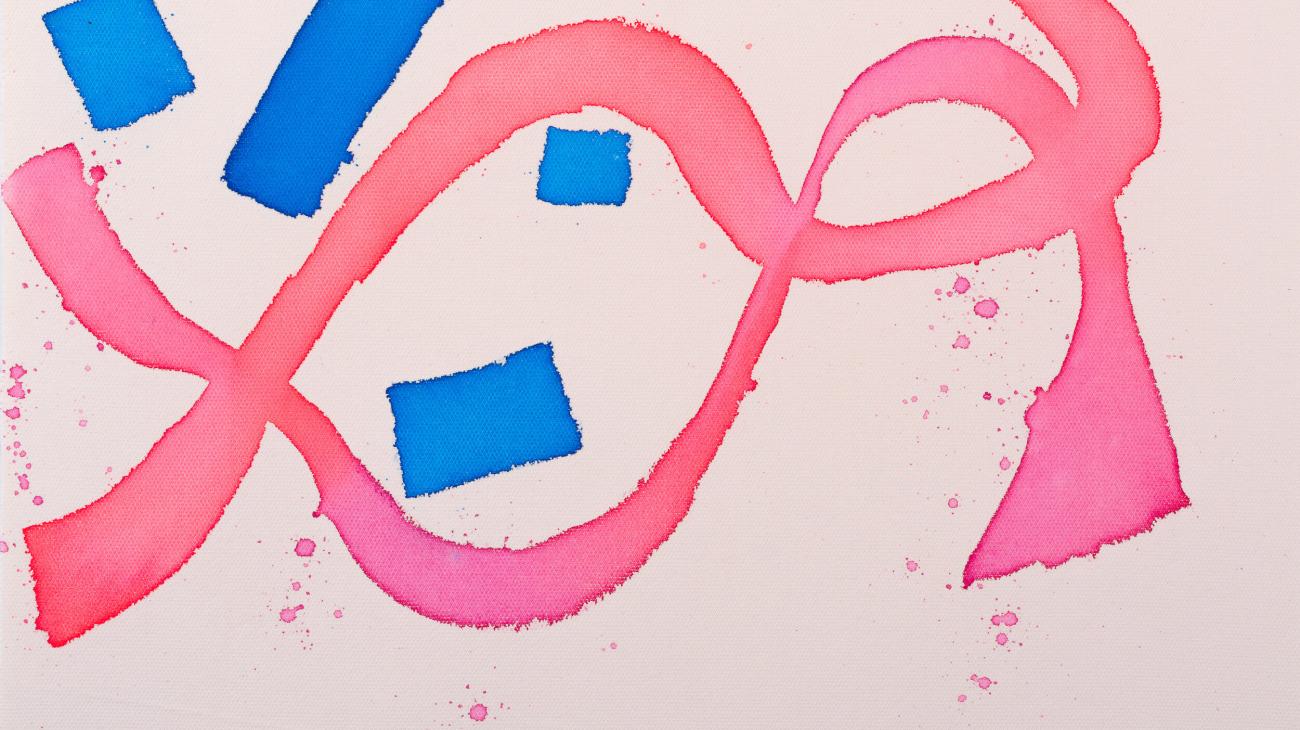
Giorgio Griffa, Nodo, 2023, acrylic on canvas / detail

Giorgio Griffa, Nodo, 2023, acrylic on canvas / detail
Curated by Ilaria Bonacossa and Sébastien Delot, this major retrospective exhibition at the Palazzo Ducale brings the oeuvre of Giorgio Griffa to the wider public. Retracing the key stages of the Turin-born artist’s career, the exhibition features a significant selection of his works, from his earliest pieces in the late 1960s to his most recent creations, placed in dialogue with the architecture, decorations, and stratified history of the Doge’s Apartments, in a unique exhibition project.
The exhibition unfolds across eleven rooms and nine thematic sections—Sign and Color, Primary Signs, Sign and Field, Rhythm, Unknown, Disorder, Unfinished, Poetry, and Océanie—developed together with the artist himself. His brief statements, written specially for each section, highlight the universal concepts that run through a career spanning almost six decades, with clear and insightful texts provided to guide visitors through the exhibition, making the works accessible even for those unfamiliar with Griffa’s painting. Alongside the works on display, the exhibition features a documentary video showing Griffa at work, a concise biography offering insight into his artistic journey, and two large-scale photographic enlargements.
The first exhibition room thrusts visitors into an explosion of Sign and Color, featuring Horizontal Triptych (1996) alongside the monumental numbers of the Golden Ratio cycle dedicated to Richard Serra, and a series of canvases from the Shaman cycle. The second room presents the crystalline purity and rigor of Griffa’s Primary Signs, the cycle that marked the beginning of the artist’s personal pictorial journey at the end of the 1960s.
The following section, Sign and Field, brings us to the 1980s, featuring powerful fields of color and tangible references to the painting of Matisse. Here, the return of natural light—thanks to the reopening of the high windows above the paneling—illuminates the Rhythm of the great hall, where sixty fragments dance rhythmically with the large canvas Beuys Board, creating a unique connection with the delicate decorations of the vaulted ceiling.
“Giorgio Griffa’s work,” explains Ilaria Bonacossa, “has the silent strength of water in its transformative capacity, staging a poetic and hypnotic suspension of time. In this ‘transformation,’ another element plays a central role, which is light. In this regard, we enthusiastically embraced Griffa’s suggestion to reopen, wherever possible, the windows of the Doge’s Apartments to natural light.”
Approaching the next room, visitors encounter the ravishing Pink Diptych and then a series of watercolors from the Golden Ratio cycle, leading them to the threshold of the Unknown. In deference to the unknown, we will not reveal any further details about the journey that continues through the sections Disorder and Unfinished, to arrive at Océanie after Poetry—a tribute to the poet Eugenio Montale in the city of his birth, and in the centennial year of the publication of his debut work Ossi di seppia (Cuttlefish Bones).
“A man of profound culture,” writes Sébastien Delot, “Griffa developed his art in silence. Heir to a great pictorial tradition, Giorgio Griffa places his trust in the intelligence of the hand and of matter, in search of the world’s deeper harmony, its right balance. He proposes a painting of silence that seeks to listen to the world.”
This is a rich exhibition, abundant in works and insights, presenting a painting that speaks of its time and continues to question the visible and the invisible. Combining reason’s rules with the mystery of the unknown, it invites the public on a journey to be taken, following Griffa’s own advice, “in silence,” in a regenerating contemplation that seems to project us beyond time.
Painting Disorder IR—A short documentary
Midway through the exhibition, visitors are treated to an insightful, eight-minute documentary directed by Marko Seifert and Raphael Janzer—Painting Disorder IR—showing Griffa at work in his studio while creating the monumental canvas Disorder IR, on display in the following room. It is a rare opportunity to observe the artist at work, attune to the intimate gestures and rhythms that lie behind his painting, and witness the creative process before admiring the finished canvas.
Educational activities and guided tours
A rich program of educational activities and guided tours for families and schools of all levels has been specially organized for the exhibition. Dedicated tours, interactive workshops, and interdisciplinary projects will explore Griffa’s pictorial language, encouraging reflection on the relationship between sign, space, and rhythm. The workshops will include hands-on activities with transparency, color, and music, inviting participants to experience painting as an open and continuously evolving process.